
NATURE: The Beauty of the Japanese Landscape
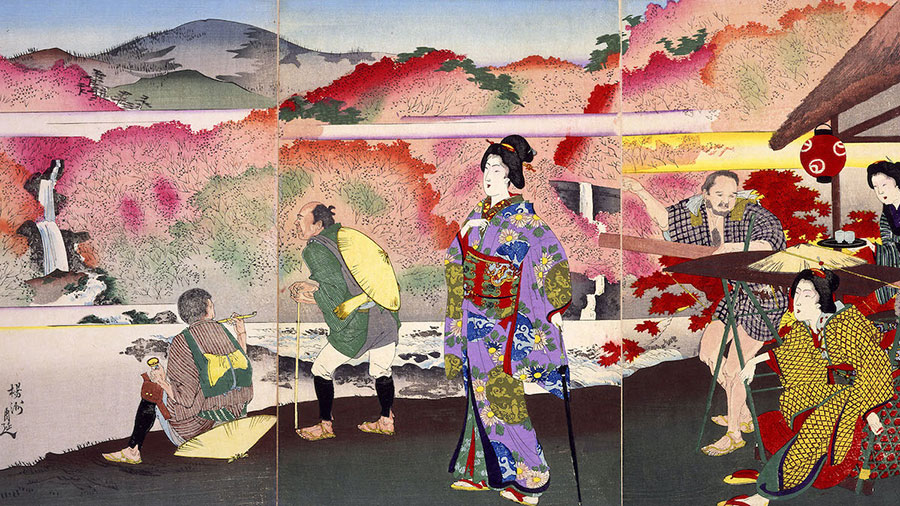
Famous Sights of Nikkō: Hannya and Hōtō Waterfalls by Yōshū Chikanobu, 1891
Japan, with its volcanic landscape and temperate climate, is rich in green forests, majestic mountains and scenic waterways, and its natural beauty and changing seasons have always been a central theme in literature and art. During the Edo period (1603-1868), when the urban population became patrons of a vibrant new artistic and literary culture, natural landscapes and elements like flowers, trees and birds were depicted not only in paintings but also in the more affordable woodblock prints designed by Japan’s most famous artists – the focus of this section of the exhibition.
The woodblock prints of the Edo period are part of a tradition called ukiyo-e (“pictures of the floating world”) – paintings, illustrated books and prints that originally portrayed the entertainers and activities of the urban pleasure quarters, or “floating world.”
In 1830, the publisher Nishimura Yohachi commissioned renowned artist Katsushika Hokusai (1760-1849) to design a print series called Thirty-Six Views of Mount Fuji (Japanese: Fugaku Sanjūrokkei). The series, which includes Hokusai’s celebrated “Great Wave,” was a huge success. Just two years later Utagawa Hiroshige (1797-1858) designed the series Fifty-Three Stations of the Tōkaidō (Japanese: Tōkaidō Gojūsan-tsugi) illustrating the stops along the route between Edo (modern Tokyo) and Kyoto. The edition published by Hōeidō was the best-selling Japanese print series of the time, establishing landscape as a theme of ukiyo-e. Hiroshige went on to design many more landscape series, including thirty more just on the Tōkaidō, and numerous other artists created prints of Japan’s famous beauty spots well into the 20th century.
Woodblock Prints by Utagawa Hiroshige
Journey through Japan
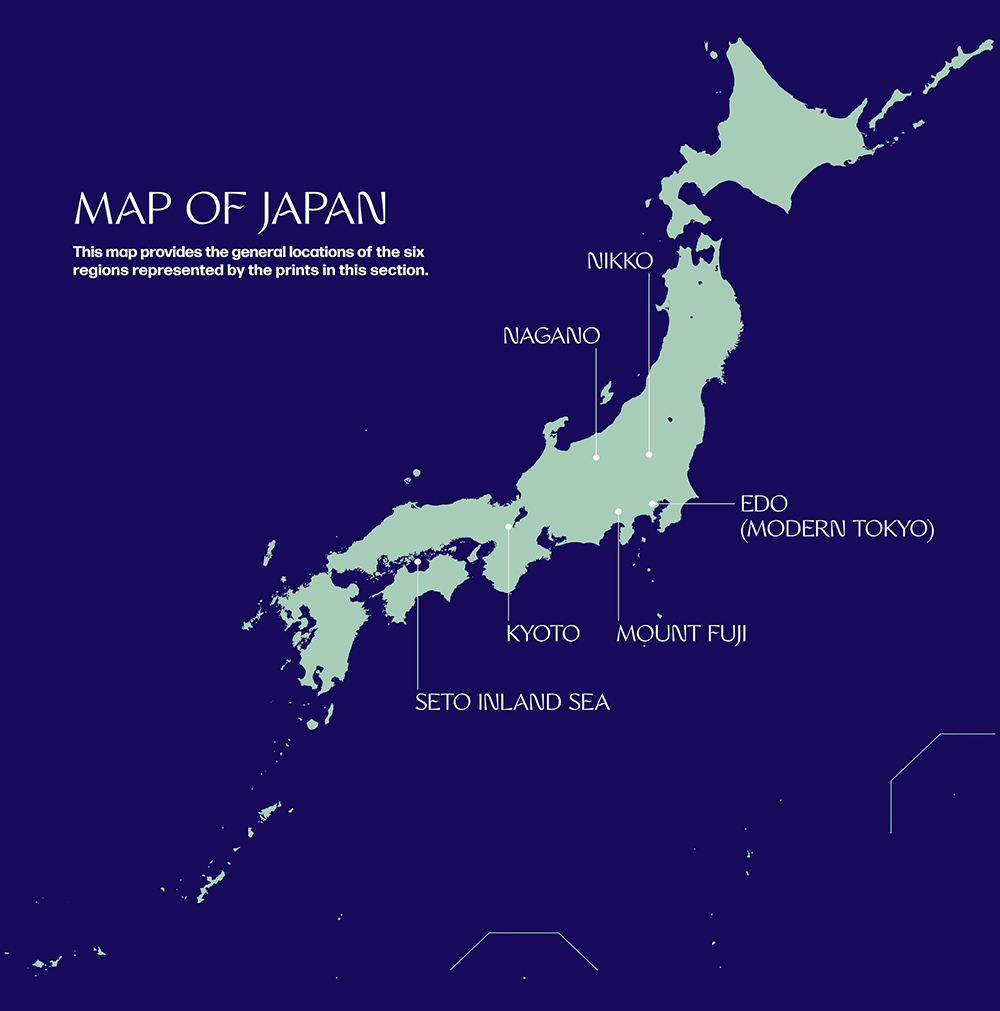
Since many of these landscape prints showed people traveling through nature, interest in travel to these sites also increased. Though strictly controlled by the government at the time, some travel was permitted, including pilgrimages to sacred sites, famous temples and shrines. For those unable to visit these places themselves, the prints served to fuel their dreams. As Japanese prints made their way around the globe – to artists and collectors in Europe and the United States – so too did the dream of travel to Japan. The prints featured in the Nature part of the exhibition represent six regions of Japan: Edo (modern Tokyo), around Mt. Fuji, Nikko, the Kyoto Area, the Seto Inland Sea and Nagano. Explore each region.
Traveling in Japan Today
Walking Culture
Craig Mod is an American based in Tokyo who walks many creative paths – both figuratively and literally. In recent years, he has been exploring the country on long walking journeys as part of his creative process.
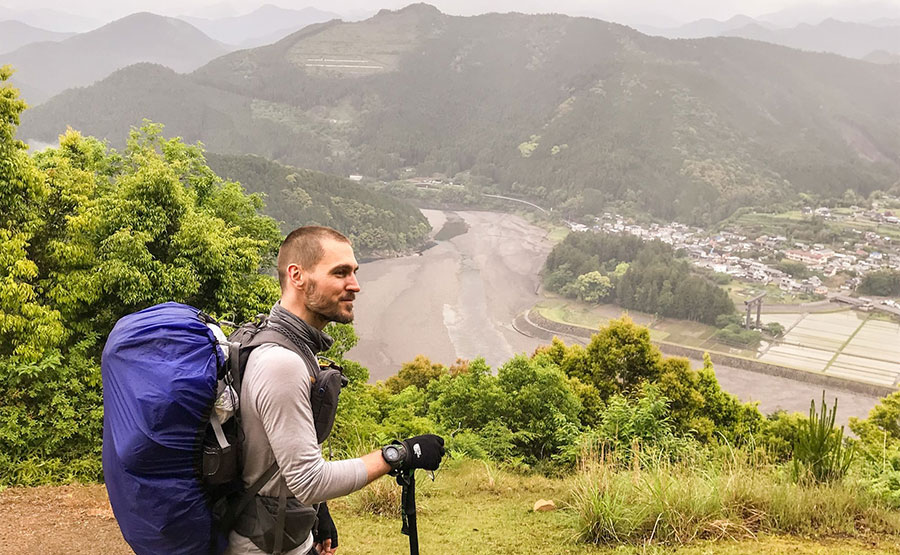
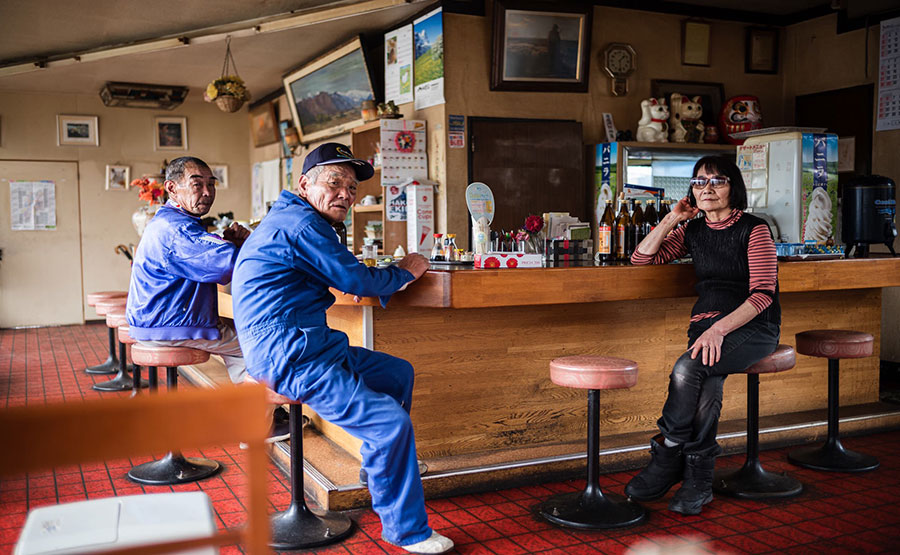
Coexisting with Nature
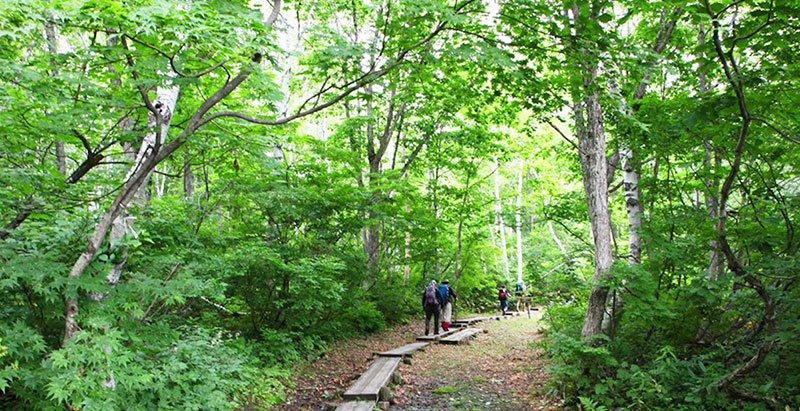
© Yasufumi Nishi / © JNTO
Shinrin-Yoku | The Forest as Therapy
Today, people around the world are discovering the practice of Japanese shinrin-yoku. Translated as “forest bathing” (or most literally, “being in the atmosphere of the forest”), shinrin-yoku has deep roots in Japan’s Buddhist and Shinto traditions, but the term was only coined in 1982 by Japan’s Ministry of Agriculture, Forestry, and Fisheries. At the time, high-stress office culture and claustrophobic cities were starting to take their toll on citizens’ health, and the Ministry saw a chance to simultaneously help urbanites de-stress, and communicate the importance of forests in society by formalizing the concept of forest therapy. Thus, shinrin-yoku was born.
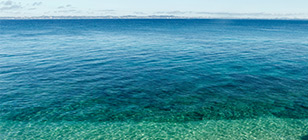
The Japanese and Nature | Beauty and Sustainability
Thousands of years of natural disasters in one of the most seismically volatile places on earth have embedded in the Japanese psyche a fear, reverence, and love for nature. This, along with Japan’s diverse climates, abundant rainfall and historic isolation have set the stage for literary, artistic, cultural, religious, food and farming/foraging practices that are unique worldwide.
Related Programs
February
・Curator’s Talk | Nature/Supernature Exhibition
March
・Film Screening | A Letter to Momo
・Webinar Conversation | Yōkai Past and Present
April
・Webinar | Scenic Views and Supernatural Beings: New Themes in 19th-century Ukiyo-e Prints
May
・Webinar | Woodblock-printed and Real Journeys Through Japan
Explore More of the Exhibition
Main Exhibition Page
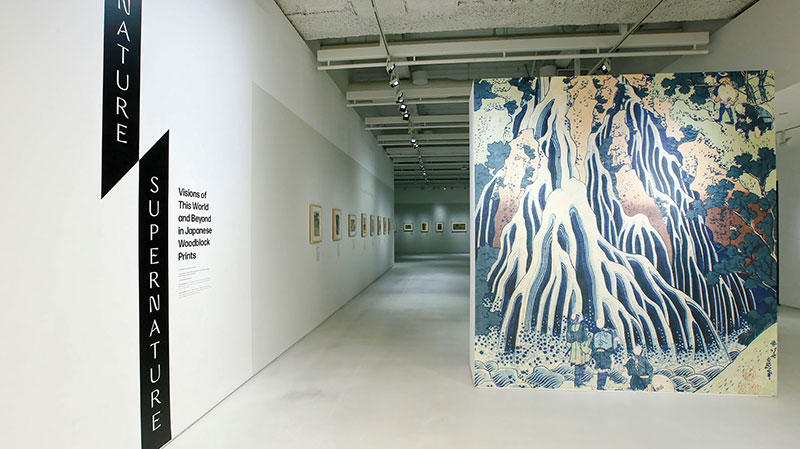
*Note: Japanese names in this exhibition are written in the traditional Japanese order, with the family name first and personal name last. However, if an artist has come to be known by a single name, (e.g., Hokusai and Kunisada) that name will be used for subsequent mentions.

